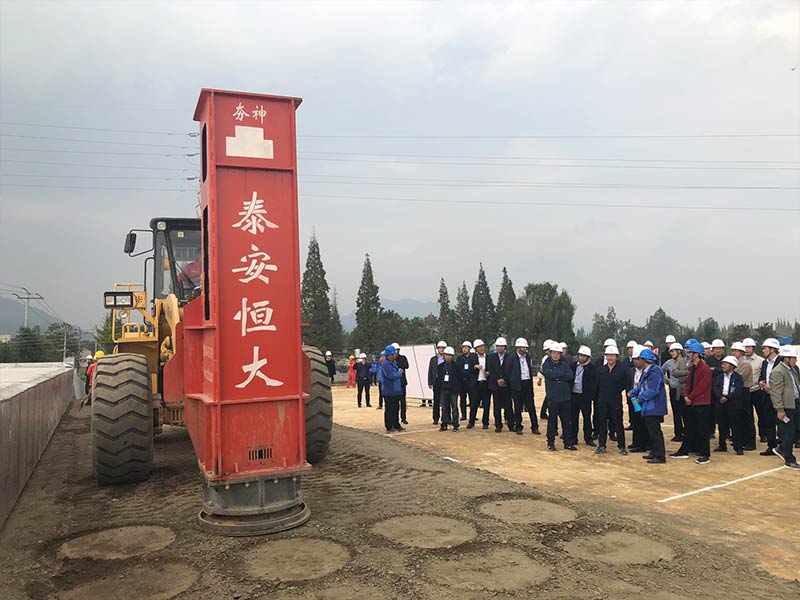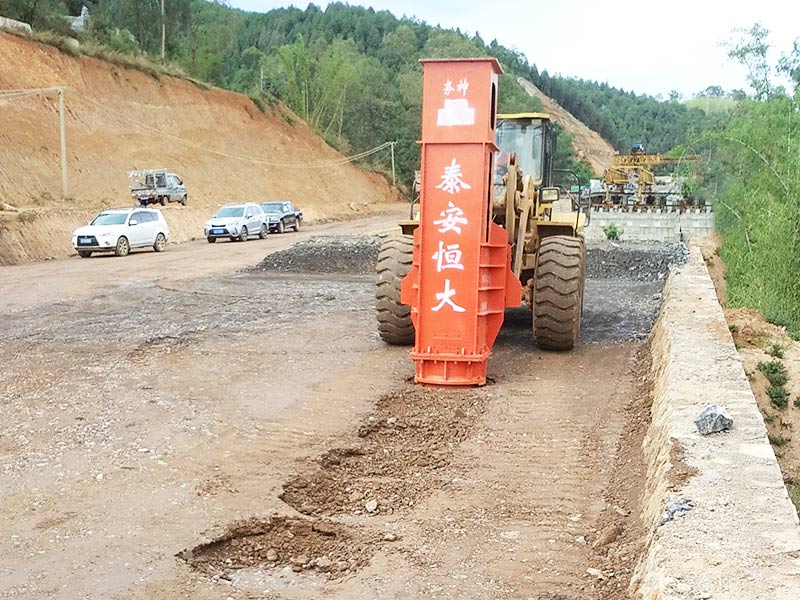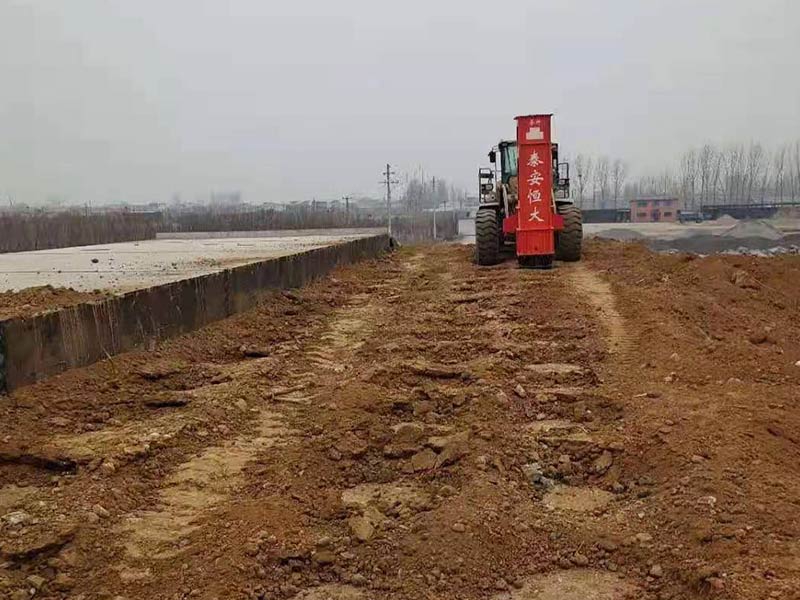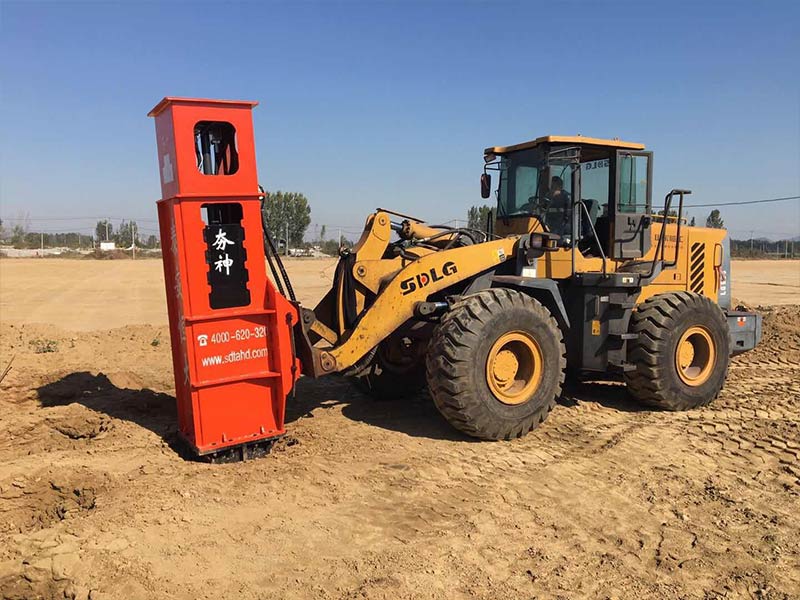Application of 36KJ rapid impact compactor in highway, 50 loader rapid impact compaction test method
updatetime:2022-08-31 09:19:14 pageviews:332views
The 36KJ rapid impact compaction model is HC36, with an effective impact depth of 1.5-3 meters. It is very suitable for use in highway construction and can meet the requirements of highway construction. It can be installed on a 50 loader for fast and accurate transition construction. HC36 rapid impact compactor is widely used in major highway construction in Shandong, Gansu, Guangdong, Chongqing, Zhejiang, Jiangxi, Henan and other countries.

The 50 loader rapid impact compactor can eliminate or weaken the inherent defects and man-made defects of the layered rolling roadbed, eliminate the possible post-construction settlement during the foundation use period in advance, and solve the problem of bridge jumping, the junction of the new and old roadbed and the roadbed filling and excavation in my country. Settling different problems. The short-term development history and rapid popularization and use are precisely to meet the high standards and high requirements of the current highway infrastructure construction. The following briefly introduces the application and specific test methods of the 36KJ high-speed hydraulic compactor in actual construction.

50 Loader rapid impact compaction equipment Test Method
Test preparation
The roadbed must be inspected according to the compaction standard and flatness required by the design before the ramming.
Determine the ramming point
On the subgrade that has been constructed and passed the test according to the compaction standard required by the design, the tamping point is released, marked with white ash and numbered, and then the initial elevation of each point is measured according to the number. The rapid impact compaction equipment is positioned according to the position of the measured stakeout, so that the tamper is aligned with the point.
The reinforcement treatment area for the back of the platform is 6m away from the culvert and platform, with a total of 6 rows. The first 3 rows of tamping points are arranged in a plum blossom shape along the hammer center distance of 1m, the 4th row of tamping points is 1.2m (horizontal)*1m (longitudinal), and the 5th and 6th rows of tamping points are 1.5m (horizontal)*1m (vertical) , the minimum distance between the edge of the rammer and the back of the table is 0.2m.

Experimental procedure
Combined with on-site construction, the test site is selected to be backfilled on the culvert platform. Equipment model: Tai'an HC36, the weight of the tamper is 3.2 tons, the stroke is 1.2 meters, the maximum potential energy of tamping is 36 kJ, and the diameter of the tamping plate is 1.0 meters. In the test, 3 gears were used to accumulate 3 hammers at a time for tamping operation, and the relative elevation after 3 hammers of each tamper was measured with a level gauge, and the corresponding cumulative settlement and relative settlement were obtained. force changes. Finally, the overall settlement of the final backfill surface was measured on the compacted surface.

Analysis of results
According to the settlement observation and bearing capacity detection test conducted on site, the test results obtained are shown in the following table.
It can be clearly seen from the above table that the settlement amount increases with the increase of the number of tamper hammers, but the increase range gradually decreases. For the 3rd gear operation, the relative settlement of the first three hammers was the largest, the cumulative settlement of the first nine hammers accounted for 75% of the total settlement of the 21 hammers in the test, and the cumulative settlement of the first 12 hammers accounted for 85.3% of the total settlement of the test 21 hammers. The cumulative settlement of the first 15 hammers accounted for 92.2% of the total settlement of the 21 hammers in the test, and it was noted that the relative settlement of the 16th to 18th hammers only accounted for 4.3% of the total settlement. Therefore, the use of 18 hammers for actual operations can already meet the requirements of on-site reinforcement, and greatly improve the operation efficiency. It is observed through the test data that the bearing capacity of the surface foundation increases by 700kpa after 18 hammers. After the surface is closed, the elevation is re-measured, and the settlement of the overall compacted surface is about 8 to 11 cm.
The above is the test method of some 36KJ rapid impact compactors on the back of highway abutments provided for you. Of course, each project has its own characteristics. The above methods and data can be used as a reference. In actual construction projects, it is still necessary to According to the construction situation, to formulate appropriate test methods and construction procedures.

